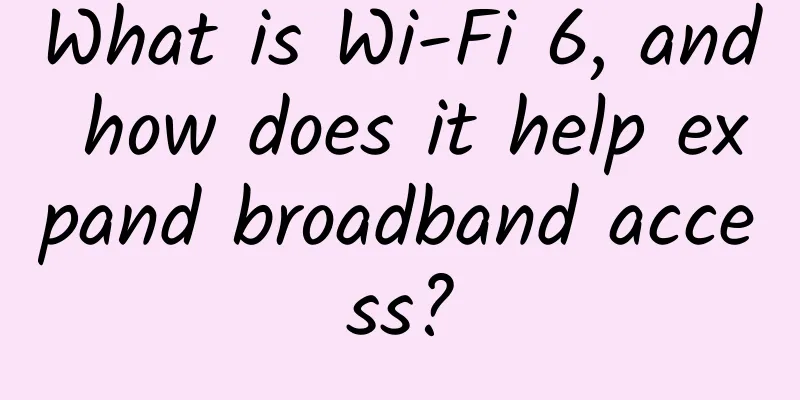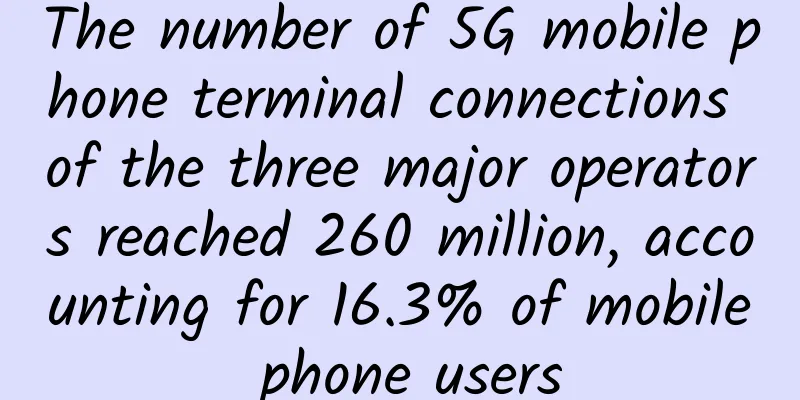What is Wi-Fi 6, and how does it help expand broadband access?

|
The coronavirus pandemic has exacerbated the digital divide that exists across much of the U.S. Many state and local governments have been working to bridge that divide by expanding broadband access, including through the deployment of new municipal Wi-Fi services. The evolution of Wi-Fi standards will help make this task easier, especially in cities, thanks to the improvements available. Compared to Wi-Fi 5, Wi-Fi 6 will perform better in densely populated urban areas and provide better data rates at a longer range, meaning more people can access higher-speed broadband. Wi-Fi 6 “excels in high-density local areas, making it ideal for urban mass transit centers, shopping malls, stadiums, campuses, and more,” Cisco Systems noted in a company blog post. “It is relatively inexpensive to deploy, maintain, and scale, and provides up to four times the capacity of 4G networks.” What is Wi-Fi 6, and how does it compare to Wi-Fi 5? What are the main advantages for cities and other local governments to deploy Wi-Fi 6 infrastructure?
What is Wi-Fi 6?The IEEE, a nonprofit organization for technological advancement, certifies different Wi-Fi standards. The Wi-Fi 6 (802.11ax) standard is the successor to the IEEE 802.11ac standard, which the Wi-Fi Alliance retroactively labeled as Wi-Fi 5. 802.11ac products hit the market in 2013. A Cisco Meraki blog post that year noted that the Wi-Fi of the time had many advantages over previous Wi-Fi, including "significantly faster speeds for new 802.11ac-enabled clients." "Most of the first 802.11ac access points use three-stream MIMO, similar to today's high-end 802.11n access points, but will have maximum data rates up to 1.3Gbps," the blog post states. "This increase comes from using 80MHz channels and a new modulation scheme (256QAM)." The blog also states that Wi-Fi-5 only works on the 5GHz band. "Each new Wi-Fi number builds on the ones that came before it: Wi-Fi 6 (based on IEEE 802.11ax) is targeted primarily at environments like enterprise campuses and stadiums," Joel Snyder, senior partner at IT consulting firm Opusone, wrote in StateTech. "Wi-Fi 5, based on the IEEE 802.11ac standard, is now widely deployed and should coexist nicely as Wi-Fi 6 debuts." Wi-Fi 5 and Wi-Fi 6: What’s the difference?In a blog post, Netkit noted that Wi-Fi 6 builds on Wi-Fi 5, which "brought multi-gigabit speeds" to our Wi-Fi connections, but "fell short of delivering an optimal" Wi-Fi experience due to the increasing number of devices connecting to the network. Wi-Fi 6 has several differences and advantages over Wi-Fi 5. Colin Valens, a technical architect at CDW who focuses on wireless technology, wrote in a CDW blog post: "Wi-Fi 6 promises many exciting new features that will be the most radical change yet to the 802.11 specification we know and love." "The name of the game here is efficiency -- the more efficiently the radios can be turned on and off, the more data can be moved, resulting in better network performance," added Vallance. Here are some key differences between Wi-Fi 5 and Wi-Fi 6: ▪ Orthogonal Frequency Division Multiplexing Access: Vallance wrote that OFDMA "is probably the most critical new feature we get in Wi-Fi 6, and it works by splitting up existing channels into smaller resource units (RUs), allowing multiple clients to be able to communicate with the access point simultaneously." Netkit noted in a blog post that OFDMA "enables your router and devices to use your bandwidth more efficiently by reducing the time between data transmissions." As a result, more bandwidth is available for other devices to use. OFDMA is “a form of frequency-division multiplexing that enables more efficient use of subcarriers when transmitting data. Previously, when using orthogonal frequency-division multiplexing (OFDM), each user got one time slot, or an entire bandwidth channel,” Cisco noted in a blog post on Wi-Fi 6. Basically, Cisco says, "users are required to wait in line for their packets to be delivered. As more clients join, packets take longer to deliver, resulting in latency and people waiting for data to be transmitted. OFDMA provides more regular, consistent packet delivery, and users don't have to wait as long." ▪ “Target wait time” ( TWT) enables clients to “go to sleep for longer periods of time with certainty, thereby reducing power consumption and, in many devices, potentially saving battery life,” Vallance wrote. An added benefit of the access point being able to schedule TWT is that it can try to schedule non-overlapping times for clients on the same cell, reducing contention and freeing up the medium more quickly. Cisco noted that because of TWT, “client devices supporting the Wi-Fi 6 standard could potentially use up to two-thirds less power. This translates to longer battery life in smartphones, laptops, tablets, and IoT devices, making it a desirable standard.” ▪ Improved speed : Netgear noted that Wi-Fi 6 offers speed improvements over Wi-Fi 5. "Wi-Fi 6 enables devices to send more data in a single transmission, resulting in up to 20% faster speeds," the company said. Improvements through higher-order modulation (1024-QAM) "increase the efficiency and speed of data transmission on the network. This technology can increase speeds by 25%," Netgear added. ▪ Better range : “The ability for 20-MHz-only devices and OFDMA to use smaller subcarriers means these devices can reach longer distances,” Netgear added. Writing in TechTarget, Lee Badman, network architect and wireless technology lead at Syracuse University, noted that Wi-Fi 6 “does bring more radio chains, better sensitivity, and channels in the form of smaller resource units. These features all contribute to greater availability and higher data rates at the same output power, which in some cases feels like improved range.” Benefits of Wi-Fi 6 for smart cities and beyondWi-Fi 6 is not a panacea for insufficient broadband access, but its technological foundation and advantages do mean it can provide faster and more ubiquitous wireless broadband coverage. "Wi-Fi 6 significantly improves throughput in high-density environments where many devices must use the same wireless access points," Richard Jeffares, former CTO of broadband infrastructure company Glide, wrote in Smart Buildings magazine. "Managed, ubiquitous Wi-Fi guarantees coverage of every inch of the residence while ensuring privacy and security. Wi-Fi 6 ubiquitous Wi-Fi will ensure faster, more powerful connections across public spaces and campuses and create new customer experiences." According to IoT Business News, Wi-Fi 6 is ideal for providing connectivity in large venues, busy campuses, and crowded public transportation hubs. "Wi-Fi 6 also supports high bandwidth and high user density at a very low cost, making it ideal for indoor applications such as stadiums, convention centers, shopping malls, school campuses, and other places where people gather," semiconductor company NXP noted in a blog post. A Wi-Fi 6 upgrade can offer many benefits, but any city or agency should proceed with caution. "A full Wi-Fi 6 deployment means changing access points, clients, and infrastructure," Snyder wrote. "That's a big step. Instead, IT managers should look for a gradual upgrade path, ensuring that anything added now can support Wi-Fi 6." |
<<: COVID accelerates interest in 5G, digital transformation, and IoT
Recommend
Inventory of digital industry keywords in 2017
2017 will soon be a thing of the past, but there ...
A 10,000-word article that explains computer networks with pictures!!!
[[383719]] The author has developed a simple, sta...
How to protect data in an increasingly insecure environment?
Protecting data is becoming increasingly difficul...
Take a look at Sigfox, LoRa, and NB-IoT: wireless transmission technologies in the era of the Internet of Things
Wireless communication technology is the transmis...
Photos: 2017 Huawei Connect Conference leaders and guests' wise words
HUAWEI CONNECT 2017 opened on September 5 at the ...
How to solve the TCP packet sticking and unpacking problem when using Netty communication? The answer is so simple
[[311931]] This article will explain the followin...
How to choose an operation and maintenance monitoring platform that suits you? Zabbix, Prometheus, Grafana
As an operation and maintenance person, operation...
Satellite communication networks will also need to be accelerated in the 5G era
Although it will take several years for 5G to be ...
Cheng Jianjun talks about China's spectrum strategy: In the future, the allocation of high, medium and low frequency bands will be fully considered
The 2022 MWC Barcelona Conference kicked off rece...
Beware of online scams and cyber attacks during the World Cup! F5 ensures application security, allowing fans to watch the game with peace of mind
It is well known that the holiday shopping period...
HostXen offers 50 yuan for new users, 50 yuan for old users who charge 300 yuan, and monthly payment for 6G memory package starts from 70 yuan
HostXen launched its first promotion after the Lu...
To cope with the global food crisis, AI, 5G and machine vision join forces to "raise fish"
Today, the global food challenge has become a rea...
Report: Global 5G RAN market shows strong growth
Global demand for 5G RAN is expected to grow at a...
OneTechCloud: 20% off all VPS hosting, starting from 25 yuan/month, Hong Kong CN2&CMI/US CN2 GIA&9929 dual ISP optional
OneTechCloud was founded in 2019 and mainly provi...
The Master Key is so powerful! Why can't it crack my neighbor's WiFi? Let's take a look at its cracking principle first
However, you may have discovered a problem. The u...









